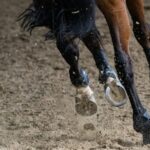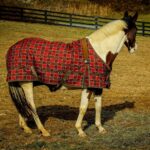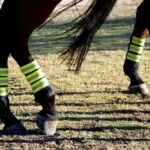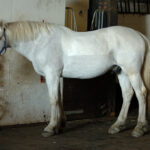Healthy hooves are the foundation of a sound horse, but hoof flaring and cracking can quickly derail your equine companion’s performance and comfort. These common but serious issues often begin subtly, making early detection and intervention crucial for preventing more severe lameness problems. Flaring occurs when the hoof wall begins to bend outward instead of growing straight down, while cracks develop when the integrity of the hoof wall is compromised. The good news is that with vigilant monitoring and proper early management, many hoof problems can be addressed before they develop into major veterinary concerns. This comprehensive guide will walk you through recognizing the earliest signs of hoof troubles and implementing effective strategies to maintain optimal hoof health for your horse.
Understanding Hoof Anatomy and Growth

The horse’s hoof is a marvel of natural engineering, consisting of the wall, sole, frog, and internal structures including the coffin bone, digital cushion, and laminae. Healthy hooves grow continuously from the coronary band at a rate of approximately 1/4 to 3/8 inch per month, taking 9-12 months for complete regeneration. This growth pattern means that any damage or improper weight distribution affects the hoof not just temporarily, but potentially for months to come. Understanding this ongoing growth process helps horse owners appreciate why early intervention for flaring and cracking is so critical—today’s minor issue becomes tomorrow’s major problem as the hoof continues to grow around the damaged area. The hoof wall should grow straight down from the coronary band, maintaining a consistent angle with the pastern when viewed from the side.
Recognizing Early Signs of Hoof Flaring
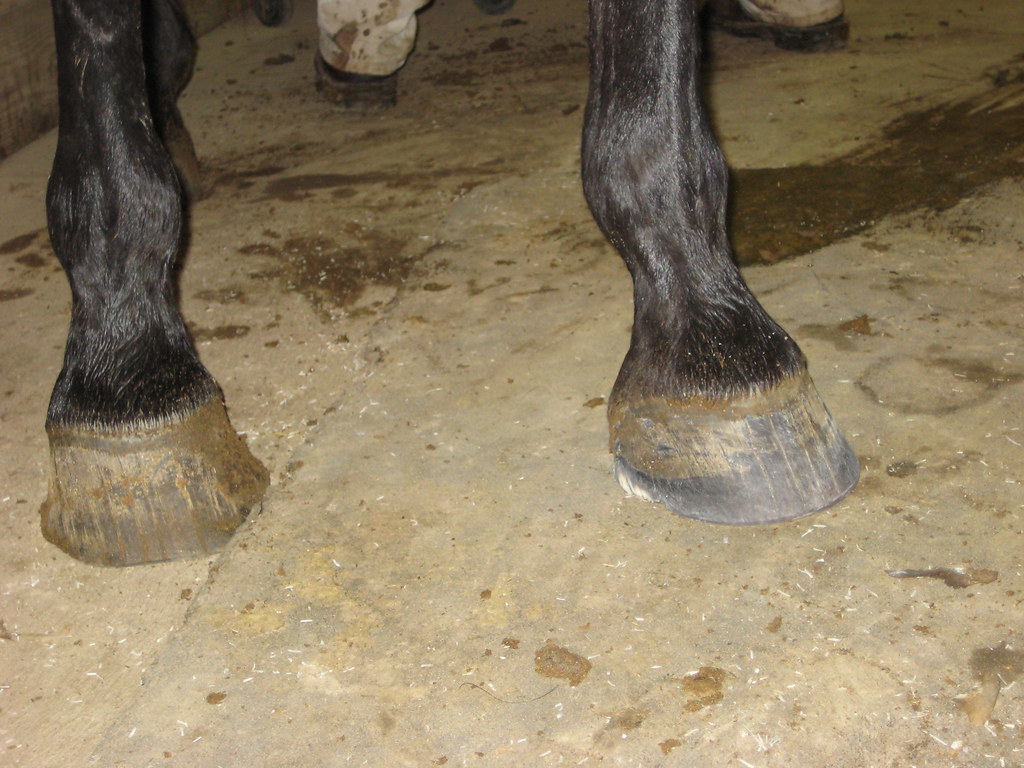
Hoof flaring begins subtly, often appearing as a slight outward bend in the hoof wall that might seem insignificant to untrained eyes. The earliest indicator is typically a change in the growth rings of the hoof, which should be parallel to the coronary band; when rings begin to widen toward the ground at certain points around the hoof, flaring is developing. You might also notice a change in the hoof’s profile, with the wall no longer forming a straight line from coronary band to ground. On dark hooves, white stress lines may appear in areas where flaring is occurring, indicating stress on the laminar connection. Catching these subtle changes requires regular, careful observation of your horse’s hooves, ideally examining them clean and on a level surface where subtle deviations are more visible.
Identifying the First Stages of Hoof Cracks
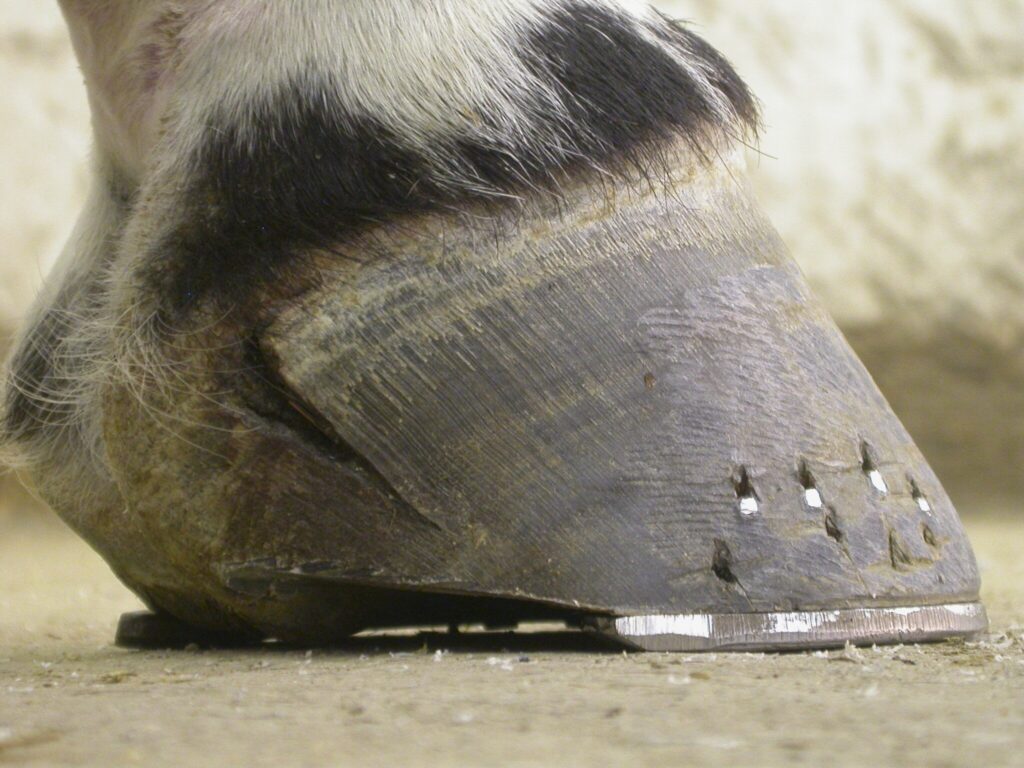
Hoof cracks rarely appear suddenly as full-blown problems—they typically begin as hairline fractures that are easily overlooked during routine care. The earliest signs include tiny vertical lines in the hoof wall that might appear insignificant but represent the beginning of structural weakness. These small surface cracks often start at either the coronary band (indicating internal stress) or at the ground surface (suggesting environmental or mechanical factors). Another early warning sign is a small “nick” or indentation at the coronary band that will grow down as a crack if not addressed. Discoloration along the hoof wall, particularly darkening or a change in texture, can also indicate developing cracks before they become visible separations. Early detection requires regular examination with clean hooves under good lighting, as these initial signs are easily masked by dirt or poor visibility.
Common Causes of Flaring and Cracking
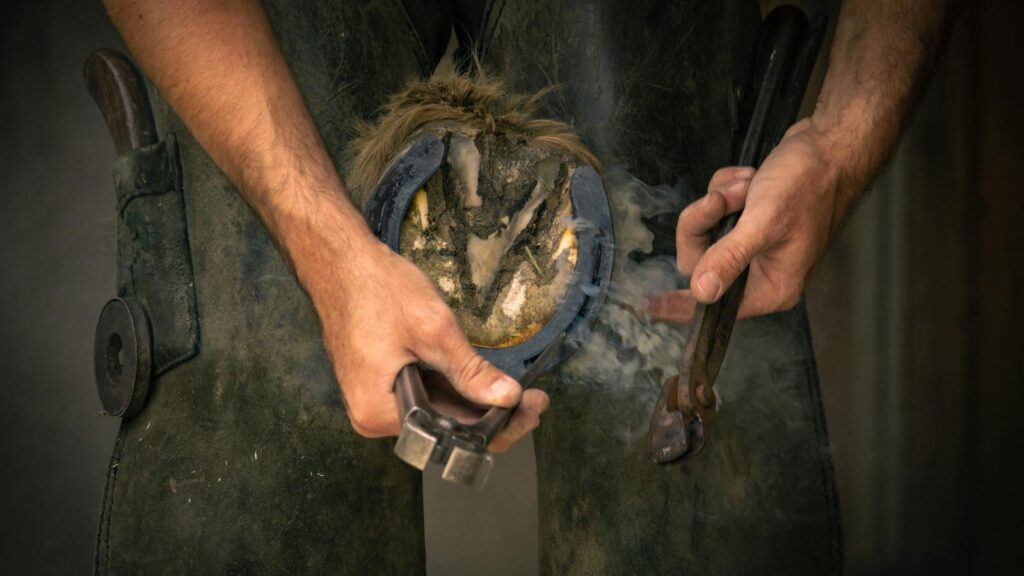
Multiple factors can contribute to hoof flaring and cracking, with improper trimming and shoeing leading the list of preventable causes. When hooves are left too long between farrier visits or trimmed unevenly, the natural forces of weight-bearing create imbalances that manifest as flaring and eventual cracking. Environmental conditions play a significant role as well—excessive moisture softens hooves, making them more prone to flaring, while extreme dryness leads to brittleness and cracking. Nutritional deficiencies, particularly lacking biotin, zinc, copper, and essential fatty acids, compromise hoof integrity from within, weakening the structure that would normally resist deformation. Conformation issues such as limb deviations place uneven stress on hooves, creating areas of weakness where flaring and cracking are more likely to develop. Understanding these contributing factors allows horse owners to address potential problems before visible damage occurs.
Establishing a Regular Hoof Inspection Routine
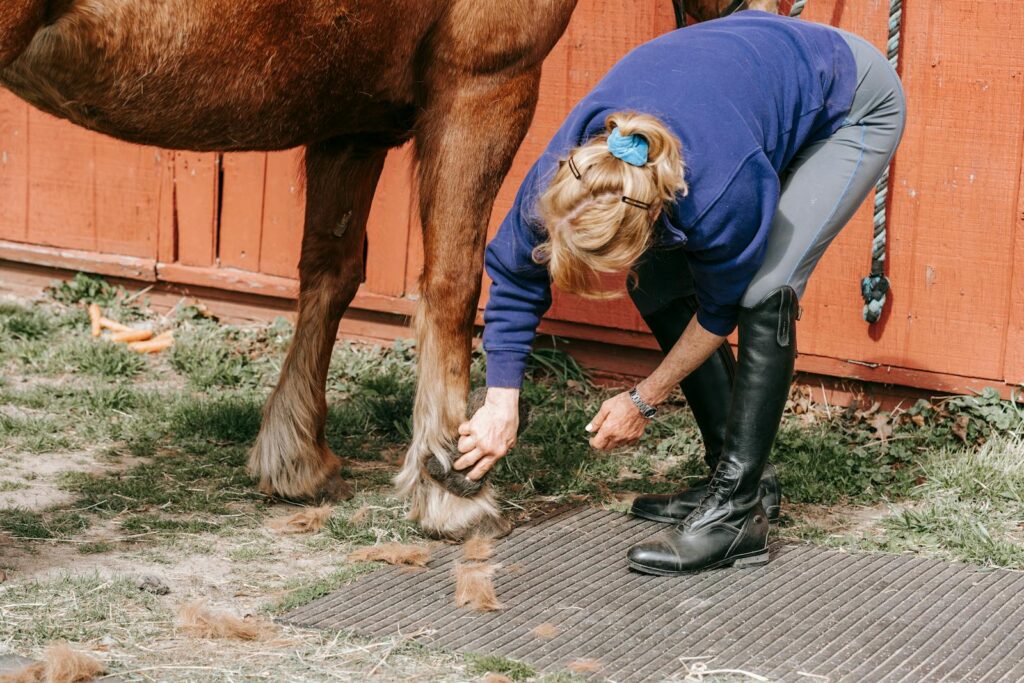
Developing a systematic approach to hoof inspection creates the foundation for early problem detection. Establish a weekly routine of thoroughly cleaning each hoof and examining it in good lighting, ideally when your horse is standing on level, firm ground. During inspection, use a hoof pick to thoroughly clean out debris, paying special attention to the sulci alongside the frog where issues often begin unnoticed. Feel the entire hoof wall for temperature variations, which can indicate inflammation, and note any changes in texture such as ridges, bumps, or areas of softness. Check for symmetry by comparing corresponding hooves, as subtle differences often provide the earliest warning of developing problems. Document your observations with photos or notes, creating a baseline of what’s normal for your individual horse and making subtle changes more apparent over time.
The Critical Role of Proper Trimming
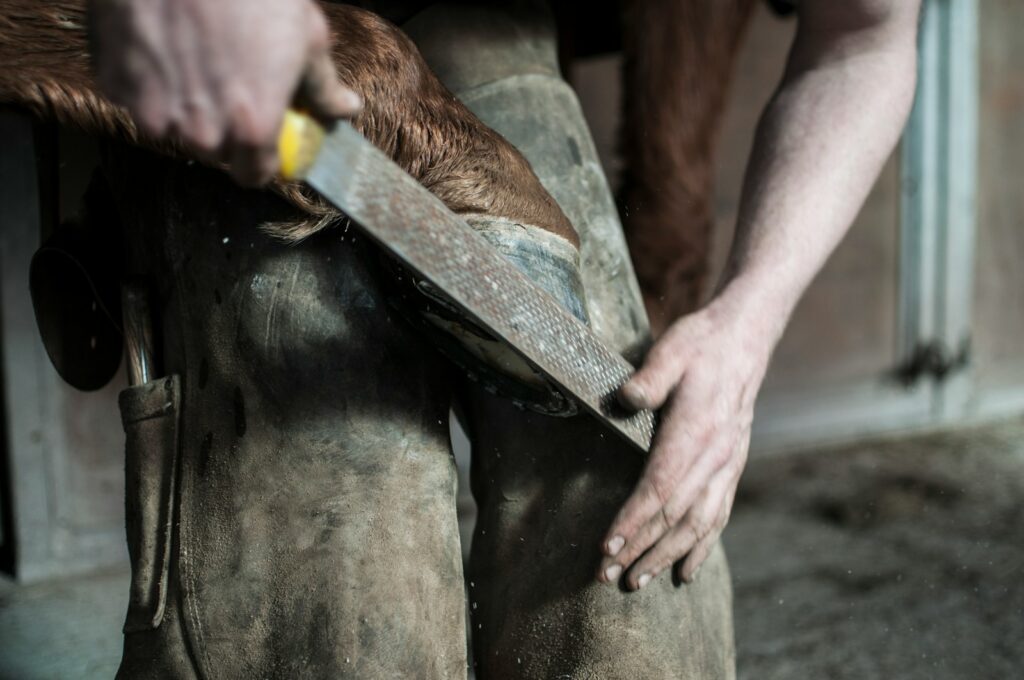
Appropriate and timely hoof trimming forms the cornerstone of preventing flaring and cracking. A skilled farrier should maintain a trim schedule based on your horse’s individual growth rate, typically ranging from 4-8 weeks, rather than adhering to a fixed calendar schedule. The trim should maintain proper hoof-pastern alignment, ensuring the force of the horse’s weight travels straight down through properly aligned structures rather than creating shearing forces that lead to flaring. Balanced trimming addresses the medial-lateral (inside to outside) balance as well as the anterior-posterior (toe to heel) balance, both crucial for preventing uneven stress that contributes to wall deformation. For horses already showing early signs of flaring, a qualified farrier can implement corrective trimming techniques that gradually restore proper alignment without compromising structural integrity. Regular communication with your farrier about subtle changes you’ve observed during your inspections ensures these issues are addressed proactively.
Shoeing Strategies for Problem Prevention
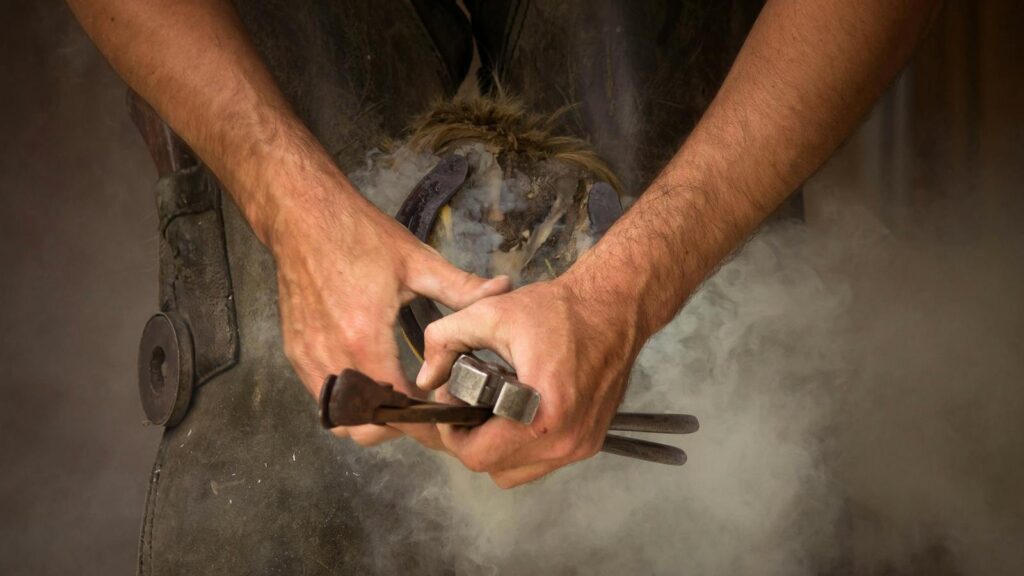
For shod horses, the right shoeing approach can significantly reduce the risk of flaring and cracking development. Properly fitted shoes should provide even support across the bearing surface of the hoof wall without extending beyond the natural width of the hoof, as excess shoe width can create leverage that promotes flaring. The nail placement should respect the white line and avoid areas where flaring or cracks are beginning to develop, as nails in these compromised areas can exacerbate the problem. For horses showing early signs of wall separation, supportive techniques such as clips, quarter clips, or specialized shoes that provide extra support to weakened areas may be beneficial under professional guidance. Some farriers utilize silicon or urethane packing materials to provide additional support to areas of the hoof demonstrating early flaring. The timing of shoeing cycles is equally important—waiting too long between resets allows growth that can change the hoof-shoe relationship and create conditions conducive to flaring.
Barefoot Management Approaches
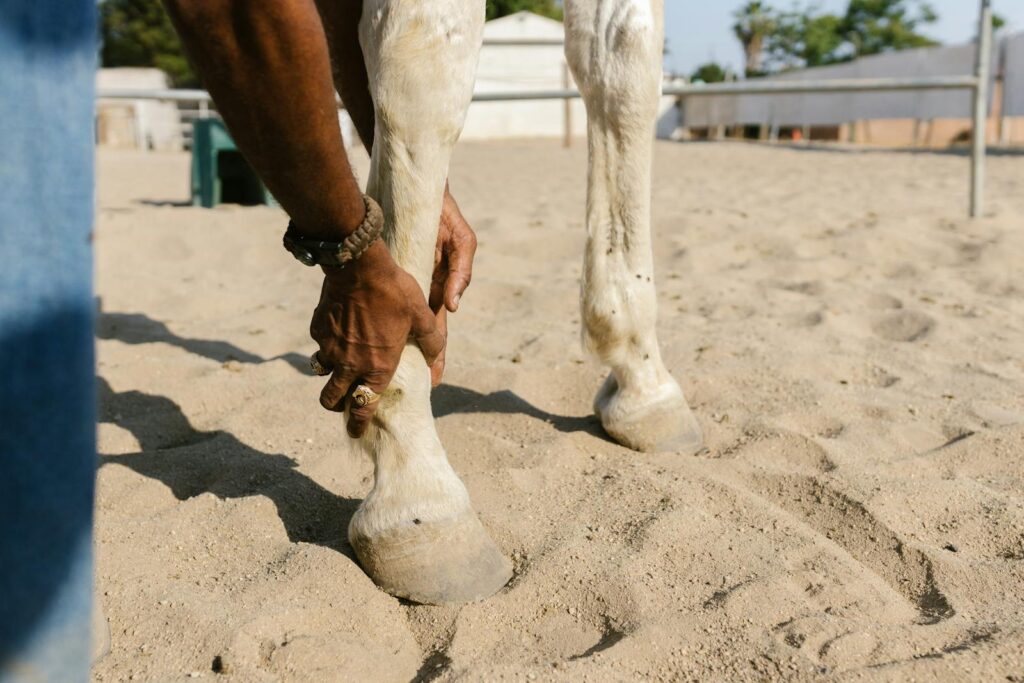
Barefoot horses require specific management strategies to prevent and address flaring and cracking. Consistent trimming on a 4-6 week schedule (or more frequently for some individuals) helps maintain optimal hoof form and function, preventing the excessive growth that leads to leverage and flaring. Proper barefoot trimming should respect the natural form of the equine hoof while accounting for the individual horse’s conformation, use, and environment. Environmental management becomes especially important for barefoot horses—providing varied terrain that includes both soft and firm footing encourages natural wear patterns that complement trimming. For horses transitioning to barefoot or those showing early signs of wall problems, hoof boots with appropriate inserts can provide temporary support during the correction period. The barefoot approach emphasizes the importance of movement in maintaining healthy circulation and hoof mechanism, making regular turnout or exercise on appropriate surfaces an integral part of preventing structural problems.
Nutritional Support for Hoof Integrity

A well-balanced diet provides the building blocks for strong, resilient hoof structure that naturally resists flaring and cracking. Essential nutrients include biotin (recommended at 15-20mg daily for horses with compromised hooves), zinc, copper, and amino acids such as methionine and lysine that form the protein structure of the hoof wall. Omega-3 fatty acids contribute to the hoof’s natural moisture balance and flexibility, helping prevent the brittleness that leads to cracking. When selecting hoof supplements, look for products with research-backed formulations rather than those making extravagant claims, and understand that visible improvements require consistency—typically 6-9 months for a full growth cycle. Quality forage forms the foundation of good hoof nutrition, with concentrated supplements filling gaps in the natural diet. Work with an equine nutritionist to develop a feeding program that addresses your horse’s specific needs, particularly if early signs of hoof problems are present.
Environmental Management for Healthy Hooves
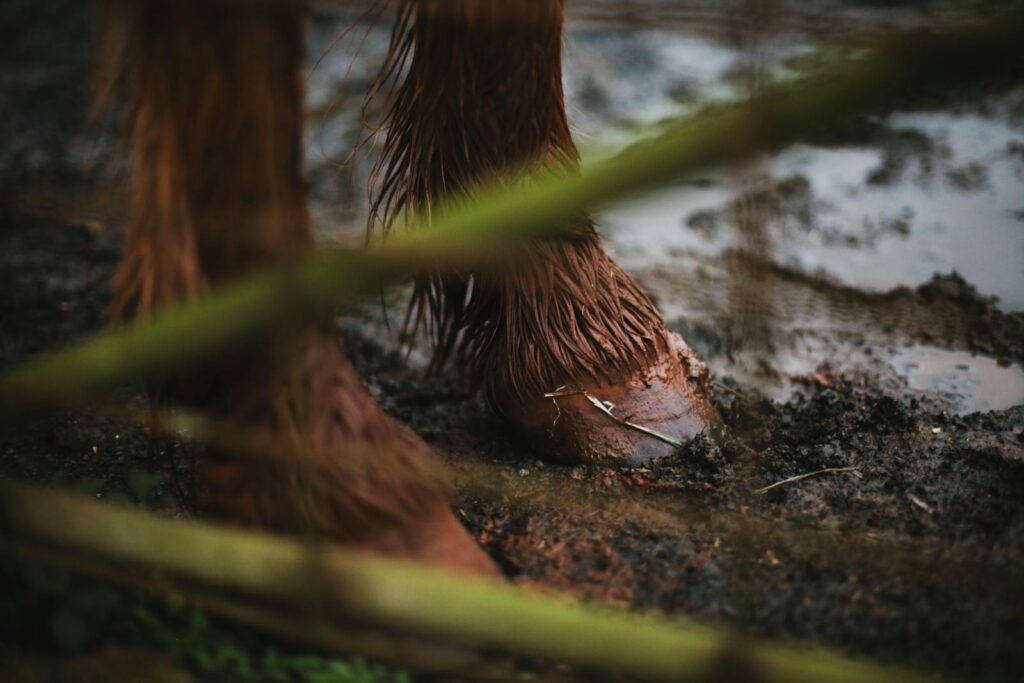
The environment in which your horse lives significantly impacts hoof health and the development of flaring and cracking issues. Excessive moisture softens the hoof wall, making it more susceptible to deformation and flaring, while extreme dryness leads to brittleness and cracking. Ideally, horses should have access to varied terrain that includes both dry and slightly damp areas, allowing them to self-regulate their hoof moisture. Paddock and stall management should focus on minimizing standing in urine-soaked bedding or deep mud, both of which contribute to hoof deterioration. For horses in consistently wet conditions, regular application of a quality hoof hardener to the wall (but not the sole or frog) can help maintain appropriate structural strength. Conversely, horses in arid environments benefit from carefully applied moisturizing products designed specifically for equine hooves, focusing on the coronary band and hoof wall while avoiding over-softening.
Early Intervention Techniques for Flaring
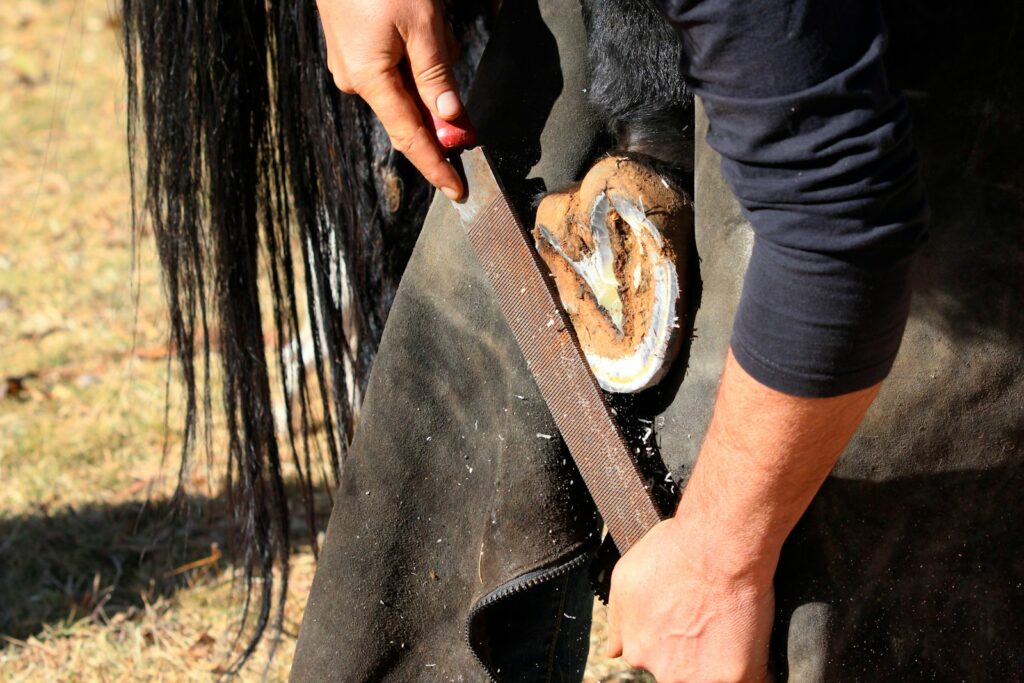
When flaring is detected in its earliest stages, prompt intervention can prevent progression to more serious structural problems. Working with a knowledgeable farrier, implement a corrective trimming approach that gradually restores proper alignment without removing excessive hoof wall at once, which could create additional weakness. The trim should focus on reducing leverage at the flared area while maintaining adequate protection and support. For more pronounced flaring, consider supportive strategies such as specialized shoes with clips, glue-on composite shoes that reinforce the wall, or strategic use of casting tape as a temporary external support. Environmental modifications become crucial during correction—providing firm, level footing reduces stress on compromised areas and supports the natural correction process. Document the flaring with photographs or measurements at regular intervals to objectively track improvement and adjust the intervention approach as needed.
Managing Minor Cracks Before They Worsen

Early intervention for hoof cracks dramatically improves the prognosis and reduces recovery time. For superficial cracks that haven’t yet penetrated deeply, removing the pressure on the cracked area through appropriate trimming often allows natural growth to resolve the issue. Your farrier may recommend stabilizing even minor cracks to prevent their progression—techniques include small strategic rasping to “bullet” the crack (preventing further splitting), applying specialized adhesives that flex with the hoof, or using small wire or synthetic wraps to prevent widening. Surface hardeners specifically formulated for equine hooves can strengthen the surrounding wall, reducing crack progression while new, stronger hoof grows in. Maintain heightened awareness of the affected area during daily care, keeping it clean and monitoring for any signs of heat, pain, or discharge that would indicate deeper involvement requiring veterinary attention.
When to Involve Veterinary Care

While many early flaring and cracking issues can be managed by qualified farriers, certain signs warrant immediate veterinary involvement. Any crack associated with lameness, bleeding, discharge, or heat in the affected foot requires prompt professional assessment. Deep cracks that penetrate to sensitive structures, or those that originate from the coronary band and extend downward (rather than starting at the ground surface), generally indicate more serious internal problems requiring diagnostic imaging and veterinary treatment. Extensive or rapidly progressing flaring, especially when occurring in multiple feet simultaneously despite proper farriery, may signal underlying metabolic or systemic issues that require veterinary diagnosis. For complex cases, consider seeking care from a veterinarian with specialized interest in equine podiatry, or coordinate a joint appointment with both your veterinarian and farrier to develop a comprehensive treatment plan.
Long-Term Management and Prevention Strategies
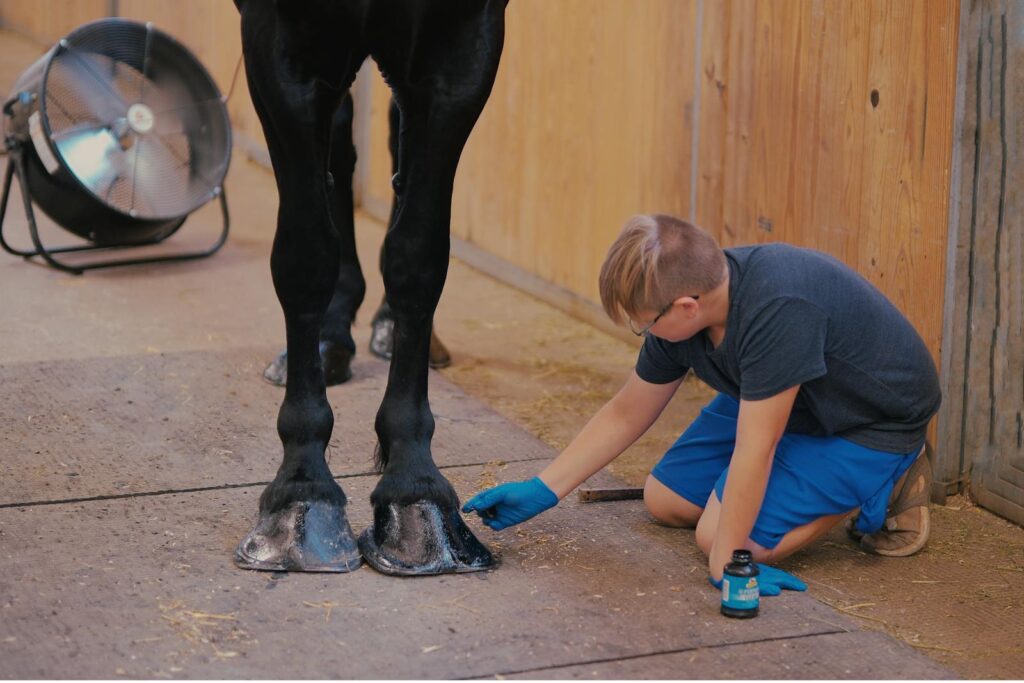
Maintaining healthy hooves requires consistent attention and a comprehensive approach that becomes part of your regular horse care routine. Establish a calendar system for scheduling regular farrier visits based on your horse’s individual growth rate and needs, rather than convenience or tradition. Develop a year-round hoof care protocol that accounts for seasonal changes in environment and adjusts nutrition, topical treatments, and management practices accordingly. Consider maintaining a hoof health journal with photos, notes from farrier visits, and observations about how different conditions affect your horse’s feet. For horses with a history of flaring or cracking issues, implement more frequent monitoring and be prepared to adjust trimming schedules, environmental management, or nutritional support at the first sign of recurring problems. Remember that consistency in care provides the greatest protection against developing serious hoof pathologies—the daily attention to detail ultimately determines hoof health outcomes.
Healthy hooves don’t happen by accident—they result from vigilant monitoring, prompt intervention, and consistent care. By developing the skills to recognize the earliest signs of flaring and cracking, horse owners can address these issues before they develop into painful, performance-limiting conditions. The investment in regular professional hoof care, appropriate environmental management, and quality nutrition pays dividends in your horse’s comfort, performance, and longevity. Remember that each horse is an individual with unique needs, and the approach that works best will be one tailored specifically to your horse’s conformation, use, environment, and history. With the knowledge and strategies outlined in this guide, you’re now equipped to be your horse’s first line of defense against developing hoof problems, ensuring that small issues never have the chance to become major concerns.


